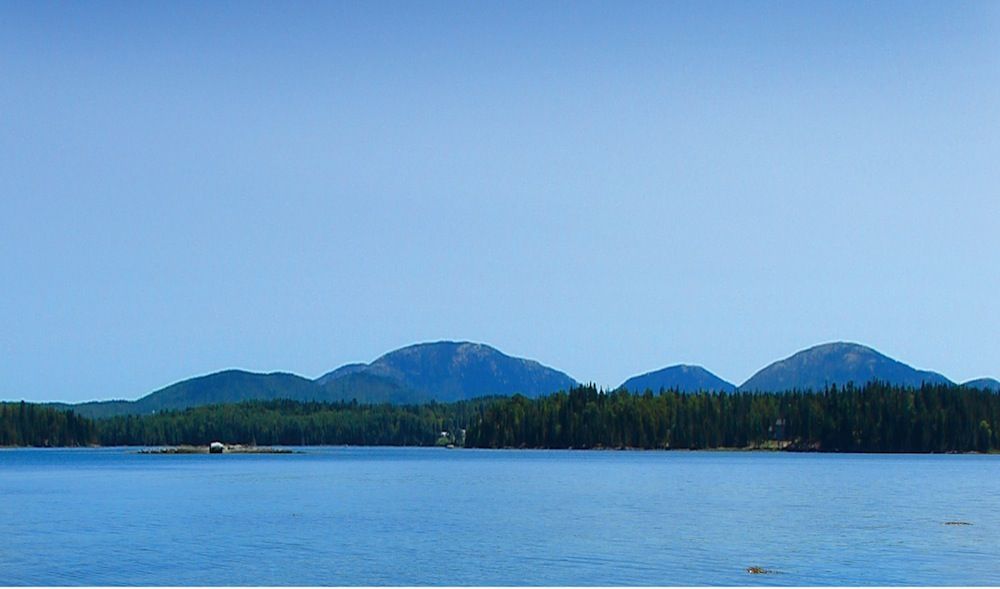
Maine's Volcanoes (Yes, Maine) Among World's Biggest

DENVER — Maine has supervolcanoes. Wait, Maine has volcanoes? Yes, and their eruptions could have been among the biggest ever on Earth, geoscientist Sheila Seaman reported here Tuesday (Oct. 29) at the Geological Society of America's annual meeting.
"Long before there were these things called supervolcanoes, we've known about giant, big, horrific silicic volcanic eruptions," said Seaman, of the University of Massachusetts at Amherst. The most massive of these blasts in recent history was Toba, which blew up an island in Indonesia 2.5 million years ago. The explosion heaved 700 cubic miles (2,800 cubic kilometers) of magma out of the Earth's crust.
Around 420 million years ago, a series of super-eruptions dropped thick piles of ash and lava fragments along the proto-East Coast. There are at least four volcanoes spread out along 100 miles (160 km) of Maine's coast, Seaman said. [Countdown: History's Most Destructive Volcanoes]
The huge volcanic rock piles are consistent with caldera-forming eruptions, Seaman said. These explosions empty a magma chamber, leaving a gaping wound in the Earth — think Yellowstone National Park, or the San Juan volcanic field in Colorado.
Since they formed, the ancient volcanic layers have been tilted up by tectonic forces, providing a top-to-bottom slice through a supervolcano. For example, Isle au Haut, part of Acadia National Park, exposes the heart of a volcano. "The whole magma chamber is lying on its side," Seaman said.
Building on years of geologic mapping and tectonic reconstructions by other researchers, Seaman has traced a direct connection between the cooled and crystallized magma chambers, called plutons, and their enormous ash deposits.
Volcanic rock layers on Maine's Cranberry Island have a 2,300-foot-thick (700 meters) layer of welded tuff, a rock formed from volcanic ash. The welded tuff from Toba's most recent blowout is 2,000 feet (600 m) thick, Seaman said. On the remote Isle au Haut, part of Acadia National Park, the volcanic rocks are more than 3 miles (5 km) thick, Seaman said. They're capped by an immense ash flow, more than 3,200 feet (1 km) thick.
Sign up for the Live Science daily newsletter now
Get the world’s most fascinating discoveries delivered straight to your inbox.
Seaman estimates the caldera at Mount Desert Island would have been about 15 miles long and 15 miles wide (25 km by 25 km). For comparison, Toba's caldera is 62 miles long and 18 miles wide (100 km by 30 km).
"The coast is so serene and so beautiful and has such a terrible, violent past," Seaman told LiveScience's OurAmazingPlanet.
Seaman thinks the super-eruptions struck between 424 million to 419 million years ago, in the Silurian period, after islands the size of Japan slammed into the eastern edge of Laurentia, the continental core of North America. Afterward, tectonic forces stretched and tore Earth's crust behind the collision zone, making space for magma to rise from the mantle, the layer beneath the crust.
She plans further work to better understand the conditions that caused the super-eruptions, such as mixing of different kinds of magma.
Editor's note: This story was updated Oct. 31 to correct a reference to Mount Desert Island and add the dimensions of its caldera.
Email Becky Oskin or follow her @beckyoskin. Follow us @OAPlanet, Facebook & Google+. Original article on LiveScience's OurAmazingPlanet.

Most Popular



